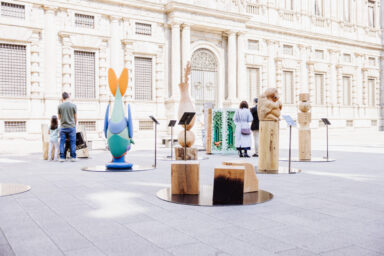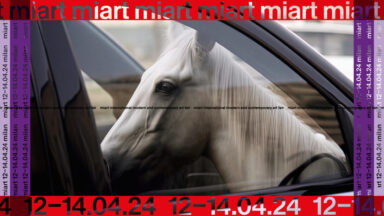Spreading love around the world: Remembering Robert Indiana
Text by: Marialena Evrenoglou
It’s one of the most recognisable works of art from the 20th century, you’ve probably seen it either on the streets, on a t-shirt, or a poster. A big, red sculpture of the word “LOVE”, with the first two letters stacked on top of the other two, and the letter “O” tilted. Robert Indiana took a dynamic, yet simple word, and turned it into art. Ever since the art piece was create in the 1960s, it’s been featured in multiple galleries, album covers, and even jewellery lines. Indiana even called it himself, “20th century’s most plagiarised work of art.” But before “LOVE”, Indiana was just another artist trying to make it in NYC. He moved there in 1954 and started working at an arts supply store, where he met Ellsworth Kelly and the two of them became lovers. He lived near the seaport where he met artists like Jack Youngerman, Agnes Martin and Cy Twombly, with whom he shared his studio for a time. It was then when he adopted the last name “Indiana,” paying tribute to the American heartland that he so loved.
At that point, Indiana had created a certain style of his. Several of his paintings revolved around monosyllabic action words like “eat,” “hug” or “die,” a rather direct, minimalistic alternative to the sophisticated persuasions of Madison Avenue. For a brief moment, he starred in an Andy Warhol film which featured Indiana eating a mushroom very slowly. Then, came “Love.” “Love” was created at the end of 1964, after Indiana and Kelly had broken up. By 1966 he had created so many variations that he eventually was featured on an art show of “Love” prints, paintings and sculptures at Stable Gallery in New York. The painting gained more popularity when he took it to the streets. In the late 1960s, he installed a 12-foot-tall steel version for the Indianapolis Museum of Art. After that, you could spot the instalment in several countries, from U.S.A to Tokyo, and translated in Spanish (amor) and even Hebrew (Ahava). Since the image had become internationally famous, many artists copied Indiana. On top of that, copyright infringement wasn’t common yet, so when writer Erich Segal stole Indiana’s idea for the cover of his best-selling novel “Love Story,” he got away with it.
Indiana took advantage of “LOVE”’s popularity to create a political message. In 1976 he changed “LOVE” to “VOTE” for a poster commissioned by the Democratic National Committee. More recently, in 2008, he built a sculpture for the Democratic National Convention using the word “HOPE” which later was made into t-shirts and limited-edition posters. Despite “LOVE” becoming Indiana’s “signature” piece, he thought that the piracy of the image and the overexposure harmed him as an artist, so he retreated to Maine in 1978, where spent his last years, remote from the rest of the world.


